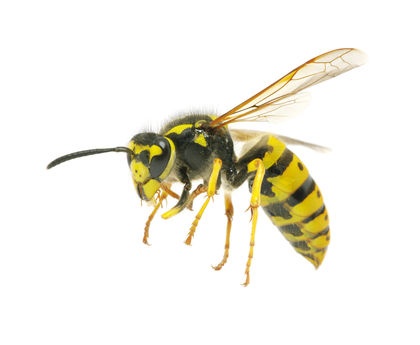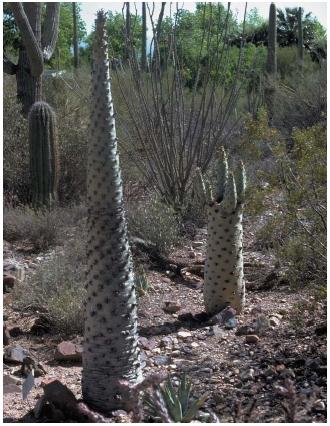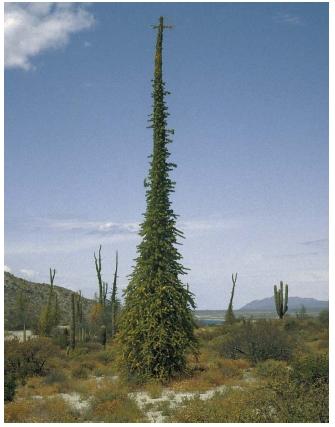Adaptation

Adaptation is a term used to describe the ways in which organisms change over time in response to the changing demands of their environment. Organisms seem to accumulate certain physiological, behavioral, and structural traits gradually, and these traits aid them in their ability to survive and reproduce under existing environmental conditions. The grasping hands of primates, the sensitive antennae of insects, and the flowers and fruits of plants are all forms of adaptation that promote survival, reproduction, or both.
Historical background
Up until the eighteenth century, scientists generally believed that every species was created separately and remained unchanged for centuries. Many features of living things—the bee's sting, the vertebrate (an animal with a backbone) eye, the human brain—appeared to have been designed by a master engineer to serve their specific purpose. A philosophy known as natural theology, which arose in the seventeenth century, argued that the elegant and often complex features of organisms were the products of a direct design by God.
But during the eighteenth century, the scientific community began to take a closer look at the immense diversity (the vast differences) and interrelatedness of (connections between) living things. The excavation of plant and animal fossils prompted a new view that life on Earth developed gradually and unevenly from simple to advanced organisms. The observation that species have "adapted" to survive in particular habitats raised new questions about the ways organisms could "fine-tune" themselves to meet the demands of their environment.
Words to Know
Adaptation: From the Latin ad ("toward") plus aptus ("fit for some role"); any structural, physiological, or behavioral trait that aids an organism's survival and ability to reproduce in its existing environment.
Coadaptation: Mutual dependence between members of two species.
Evolution: The theory that all plants and animals developed gradually from earlier forms over a long period of time and that variations within a species are the result of adaptive traits passed on from generation to generation.
Exaptation: Any adapted trait that performs a beneficial function different from the one it originally evolved to serve.
Natural selection: A natural process that results in the survival of individuals or groups best adapted to the conditions in which they must exist.
Different species that live in different environments often exhibit similar characteristics. Fish, whales, and penguins all use fins or flippers to propel themselves through water. The common plan of such features demanded an explanation, so researchers set out to explain this similarity of traits in unrelated organisms.
The Peppered Moth
Henry Bernard David Kettlewell's study of the peppered moth, Biston betularia , is one of the most widely cited cases of natural selection producing adaptation. Before the Industrial Revolution in England in the late 1800s, this moth was predominantly light in color. (The Industrial Revolution was a time of major change in England's economy, marked mainly by the introduction of power-driven machinery.) Light coloring afforded perfect camouflage for the moth from predatory birds, since it blended so well with the similarly colored lichen-covered tree trunks on which it rested. When pollution from factories caused the lichen on the trees to die, the moths' resting place became the darker color of the bark beneath. Kettlewell observed that, as this environmental transformation occurred, a dark form of the moth became increasingly common, eventually making up more than 90 percent of the population of moths in the affected areas. In the unpolluted areas, however, the original light form of the moth remained common.
Kettlewell attributed the moth's color change to selection by predatory birds, which locate the moths by sight, and so remove (by eating) individual moths that do not blend in with the background coloration of trees in their environment. He tested his idea that the moths' color protected them from predation (being captured) by placing each of the two forms on trees in different areas, photographing birds in the act of capturing moths, and measuring the rates at which the two moth forms were eaten by birds. Kettlewell concluded that the moths' color was indeed the result of adaptation to conditions in their habitat.
One effort to explain adapted traits was proposed by French botanist Jean-Baptiste Lamarck (1744–1829). In 1809, he theorized that changes in the environment cause structural changes during an organism's life that are passed on to offspring. According to the notion of the inheritance of acquired characteristics, also known as Lamarckism, giraffes would have "acquired" their long necks from stretching to reach leaves not available to other animals. Members of each succeeding generation stretched their necks to attain leaves at a higher level, which led to the modern giraffe. Although Lamarck's theory was later discredited, he remains the first scientist to acknowledge the adaptability of organisms.
In 1859, Charles Darwin (1809–1882), the great English naturalist, published his influential book The Origin of Species by Means of Natural Selection. In it, Darwin discusses the adaptations of organisms as the product of natural selection. Natural selection implies that—when forced to compete for limited resources such as food—those organisms best adapted to their specific environment are most likely to survive, reproduce, and transmit their traits to offspring.

Biologists now recognize natural selection as the means by which evolutionary adaptation occurs. Exactly how specific adaptations arise, however, is far from solved. It is easy to imagine how natural selection might produce relatively simple adaptations such as camouflage: a rabbit that lives in regions covered by snow in winter is better protected from prey if it produces a white coat during the winter months. The difficulty arises in explaining the evolution of extremely complex adaptations, such as the vertebrate eye. Invertebrates, animals lacking a backbone, have simple eyes that detect only changes in light and form only a poor image at

best. Vertebrates, animals with a backbone, detect changes in light and motion and can form detailed images. How did such a superb adaptation come about?
Darwin suggested the answer lies in very gradual changes over many generations, in which each intermediate stage leading to a fully formed eye had some adaptive value. All the parts making up a fully functioning eye could evolve independently in small steps, each one building on and interacting with earlier changes. Thus, even a partially developed eye could be quite advantageous—indeed, could mean the difference between life and death—for an ancient vertebrate.
Examples of adaptation
Physiological adaptation. People who visit or live at high altitudes undergo physiological changes (adaptations) to adjust to the low-oxygen environment. Travelers to these areas commonly experience hypoxia, a condition of low oxygen in the blood. To compensate for the temporary drop in oxygen, vacationers' bodies speed up the oxygenation process: they breathe at a faster rate, their hearts speed up and pump more strongly to send more blood throughout the body, and they produce more red blood cells to carry oxygen to body tissues. Over a longer period, as the body adjusts to the change in altitude, the heart output and ventilation rate return to normal levels, but the red blood cell count continues to climb. The most famous of all high-altitude peoples are the Sherpas of Nepal, whose climbing feats offer a stunning example of evolved adaptation.
Evolutionary adaptation. Some of the most interesting cases of adaptation occur when two species evolve together so that each benefits from the other. This mutual dependence can be seen between the ant Formica fusca and the larval (not yet fully developed) stage of the lycaenid butterfly Glaucopsyche lygdamus. The butterfly caterpillar produces a sweet "honeydew" solution that the ants harvest as food. In return, the ants defend the caterpillar against parasitic wasps and flies. The mutual adaptation of two species in this manner is known as coadaptation.
Interactions between species are not always beneficial for both members, however. Heliconius butterflies scatter the pollen from the flowers of Passiflora vines, benefitting the plant. But female butterflies also lay single eggs on young Passiflora shoots, and the developing larva may eat the entire shoot, a definite cost to the plant. As an apparent adaptive response, several Passiflora species produce new shoots featuring a small structure that closely resembles a Heliconius egg. A female butterfly that sees this "egg" will avoid laying her own egg there, and the shoot will be spared.
Current approaches to adaptation
Some researchers draw a distinction between current use and the historical origin of adaptive traits. This distinction has led researchers Stephen Jay Gould and Elisabeth Vrba to suggest the term exaptation to describe traits that were originally intended to perform different functions in an organism. For instance, the observation that a white coat helps camouflage a snowshoe hare in the snow does not provide information about the origin of the species' white fur. It may have evolved for its improved heating properties and only by chance proved to be advantageous as camouflage. In some cases, therefore, the features we recognize as adaptive are really only secondary uses of traits that originally arose for other reasons.
[ See also Evolution ]